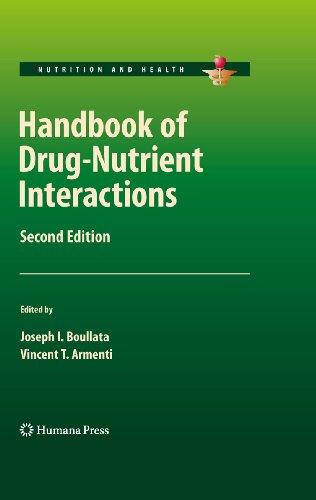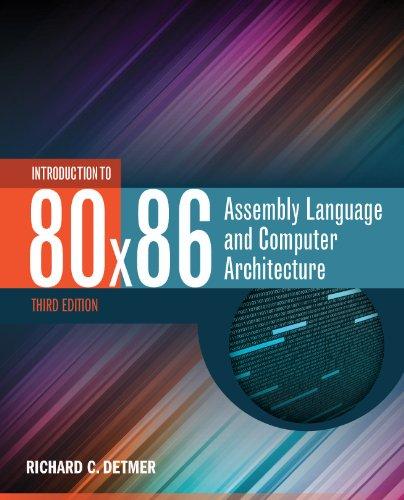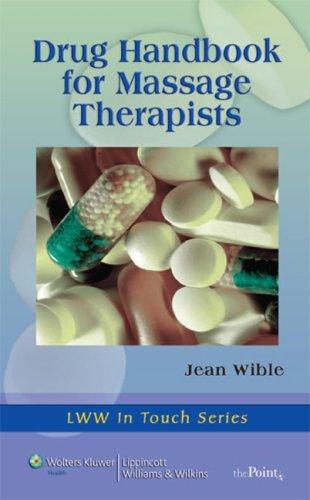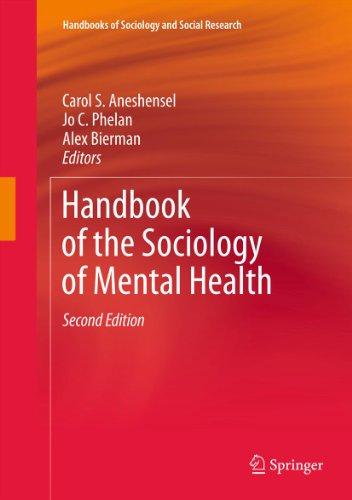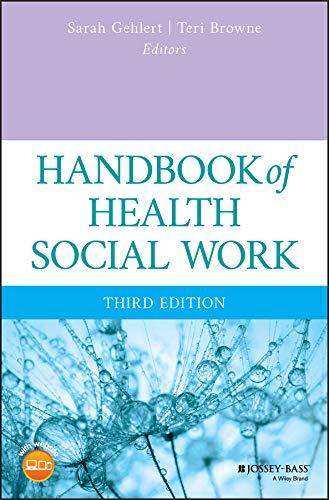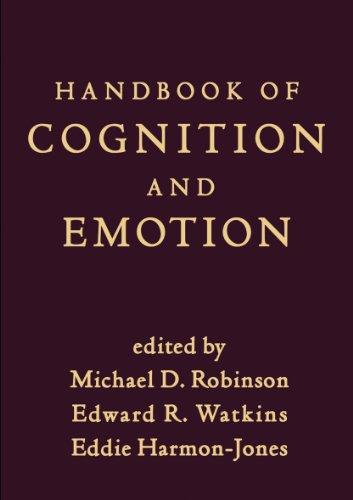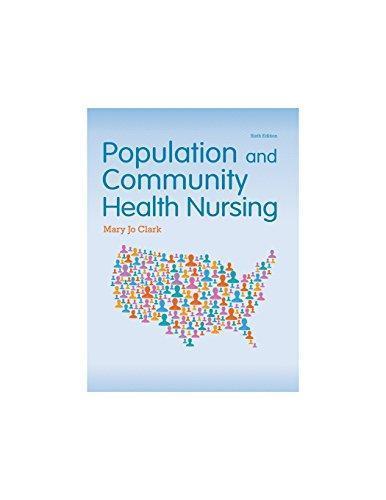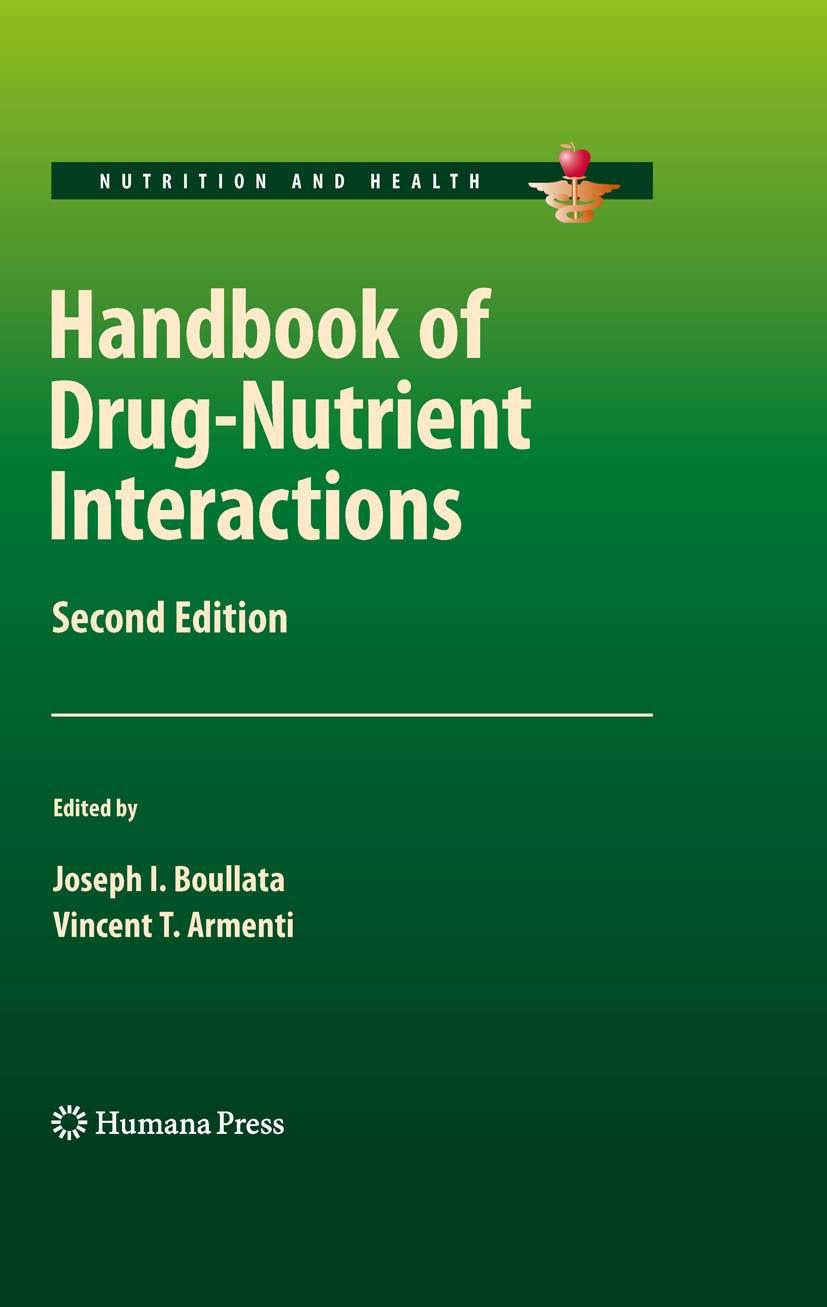SeriesEditorIntroduction
TheNutritionandHealthSeriesofbookshave,asanoverridingmission,to providehealthprofessionalswithtextsthatareconsideredessentialbecauseeach includes(1)asynthesisofthestateofthescience;(2)timely,in-depthreviewsbythe leadingresearchersintheirrespectivefields;(3)extensive,up-to-datefullyannotatedreferencelists;(4)adetailedindex;(5)relevanttablesandfigures;(6)identificationofparadigmshiftsandtheconsequences;(7)virtuallynooverlapofinformationbetweenchapters,buttargeted,interchapterreferrals;(8)suggestionsof areasforfutureresearch;and(9)balanced,data-drivenanswerstopatient/health professionalsquestionsthatarebaseduponthetotalityofevidenceratherthanthe findingsofanysinglestudy.
Thegoaloftheseriesistodevelopvolumesthatareadoptedasthestandardtext ineachareaofnutritionalsciencesthatthevolumereviews.Evidenceofthesuccess oftheseriesisthepublicationofsecond,third,andevenfourtheditionsofmore thanhalfofthevolumespublishedsincetheNutritionandHealthSerieswas initiatedin1997.Theseriesvolumesthatareconsideredforsecondandsubsequent editionshaveclearlydemonstratedtheirvaluetohealthprofessionals.Second editionsprovidereaderswithupdatedinformationaswellasnewchaptersthat containrelevantup-to-dateinformation.Eacheditorofnewandupdatedvolumes hasthepotentialtoexamineachosenareawithabroadperspective,bothinsubject matteraswellasinthechoiceofchapterauthors.Theinternationalperspective, especiallywithregardtopublichealthinitiatives,isemphasizedwhereappropriate. Theeditors,whosetrainingsarebothresearchandpracticeoriented,havethe opportunitytodevelopaprimaryobjectivefortheirbook,definethescopeand focus,andtheninvitetheleadingauthoritiesfromaroundtheworldtobepartof theirinitiative.Theauthorsareencouragedtoprovideanoverviewofthefield, discusstheirownresearch,andrelatetheresearchfindingstopotentialhuman healthconsequences.Becauseeachbookisdevelopeddenovo,thechaptersare coordinatedsothattheresultingvolumeimpartsgreaterknowledgethanthesumof theinformationcontainedintheindividualchapters.
‘‘HandbookofDrug–NutrientInteractions–SecondEdition’’editedbyJosephI. BoullataandVincentT.ArmentifullyexemplifiestheNutritionandHealthSeries’ goals.Thisvolumeisverytimelyasabout80%ofAmericansconsumeatleastone drug–definedasapharmaceuticallyactiveagent–regularly.Moreover,thefastest growingpopulationintheUnitedStatesaswellasgloballyisthatover60yearsof ageandespeciallytheoldest-old,thoseover80yearsofage,anddruguseincreases
withincreasingage.Additionally,theagedareatgreatestriskforbothdeficiencies aswellasoverconsumptionofcertainnutrientsthatcouldbefurtherexacerbatedby drug–nutrientinteractions.Theeditorsclearlyunderstandtheseriousnessofthe issueofdrug–nutrientinteractions.Theyhavestatedthat‘‘Inthecareofpatients, bothdrugtherapyandnutritionaltherapyarecritical.Thepotentialfordrugsand nutrientstointeractwitheachotherissignificant,butunrecognizedbymany clinicians.Theseinteractionsmayresultintherapeuticfailureoradverseeffectsof thedrug,oralterationsinthenutritionalstatusofthepatient–ineithercase impactingthepatient’soutcome.’’
Thisimportanthandbookpresentsatimelyreviewofthelatestscienceconcerningdrug–nutrientinteractionsaswellaspractical,data-drivenguidanceforthe managementofat-riskpopulationsexposedtotherapeuticinterventions.Theoverarchinggoaloftheeditorsistoprovidefullyreferencedinformationtohealth professionalssotheymayenhancethenutritionalwelfareandoverallhealthof clientsandpatientswhomaynothavebeenawareofpotentialunexpecteddrug–nutrientinteractions.Thisexcellent,up-to-datehandbookwilladdgreatvalueto thepracticinghealthprofessionalaswellasthoseprofessionalsandstudentswho haveaninterestinthelatestinformationonthesciencebehindtheinteractionsof nutritionalstatusanddrugmetabolismandviceversa,thechangesintheseinteractionsduringthelifespan,andthepotentialfordrug–nutrientinteractions,either beneficialorharmful,tomodulatetheeffectsofchronicdiseasesandconditions thatarewidelyseeninthemajorityofpatientpopulations.
Drs.BoullataandArmentiareinternationallyrecognizedleadersinthefieldof pharmacologyandnutritionwithparticularexpertiseinclinicalapproachesto effectivemanagementofdrug/disease/dietinteractions.Dr.Boullataisarecognized leaderinthefieldofnutritionalpharmacology,andDr.Armentiisatransplant surgeon,andtheyserveasprofessorsofPharmacologyandTherapeuticsandof Pathology,AnatomyandCellBiology,andSurgeryrespectively.Botheditorsare excellentcommunicatorsandtheyhaveworkedtirelesslytodevelopthesecond editionoftheirhandbookthatisalreadyestablishedasthebenchmarkinthefieldof clinicalnutrition.Thisvolumecontinuestoincludeextensive,in-depthchapters coveringthemostimportantaspectsofthecomplexinteractionsbetweendietary componentsandnutrientrequirementsandtheirimpactondrugabsorption,distribution,andelimination.Drugsusedinthetreatmentofchronicdiseasesaswellas theacuteconditionsinbothmenandwomenarereviewedwiththeemphasisonthe effectsofthesetherapiesonnutritionalstatus.
Theintroductorychaptersprovidereaderswiththebasicsofthecomplexities involvedindrugdispositionasthedrugsmovefromtheabsorptivesurfacetothe bloodandthentotargetorgansandorganellesintheliverandotherorgansthat containdrug-metabolizingenzymes.Detailedinformationaboutdosingandpotentialdrug/nutrientinteractionsistabulated.Additionally,anewchapterondrug transportersincludinginformativetablesconcerningtheirlocationandthemoleculesthataretransportedintoandoutofcellshasbeenaddedtothehandbook. Drug-metabolizingenzymeshavecomplexfunctions.Thenextchapterdescribesthe actionsofmanyofthe57functionalCYPenzymesintheliverandcitesover300 references.Finally,toassurethatallreadershaveabasicunderstandingofthe
humangastrointestinaltract,thelastchapterinthispartdescribestheeffectsof foodmovementsintheGItract,thereleaseofenzymesandsignalingmoleculesin themouththroughtheanus,andtheabsorptionoffoodintheintestine.Thus,inthe firstpartofthevolume,thereaderisprovidedwithvaluableinformationaboutthe basicsofdrugaswellasnutrientmetabolismandareviewofthedrugclassesand theirexpecteddispositionwithinthebodyandtransport,enzymaticconversions, andpotentialinteractionswithdietaryconstituents.
PartIIreviewstheinfluenceofnutritionalstatusondrugdispositionandeffects. Twochaptersexaminetheeffectsofeitherunder-orover-nutrition(obesity)on drugdispositionandtheireffects.Bothcomprehensivechaptersreviewrelevant classesofdrugsthatcanbemostaffectedbylowbodyweightandobesityor overweightconditions.AsmorethanhalftheUSpopulationiseitheroverweight orobese,thischapterisofgreatimportancewhenconsideringdrugdosesfor efficacy.
PartIIIcontainssevenchaptersthatexaminetheinfluenceoffoods,nutrients, andsupplementsondrugdisposition.Co-administrationofadrugwithamealcan havesignificanteffectsonthedrug’spharmacokineticsandisespeciallycriticalif thedrughasarelativelynarrowwindowofefficacy.Specificinformationaboutthe negativeeffectsofmealsonabsorptionofproteaseinhibitorsaswellasthebenefits ofmodified-releaseoraldosageformsispresented.Practicalexamples,clinical studydesigns,andtablesdescribingmedicationstobetakenwithandwithout foodareincludedtobetterassurethattheeffectoffoodondrugefficacyisunderstoodbythehealthprovider.Specificfoodsandfoodcomponentshavebeenfound tohavesignificanteffectsondrugabsorptionandeffectiveness.Macronutrients includingfatandprotein,cruciferousvegetables,grapefruitjuice,caffeine,alcohol, vitamins,andcertainherbsaswellasfoodpreparation,suchascharcoalbroiling, canallaffectdrugdispositionandarereviewed.Becausetheeffectofgrapefruit juiceandotherjuicescanaffectmanydrugs,thistopicthatincludesover200 references,ispresentedindetailinitsownchapter.Certaindrugsarepoorly absorbed,butabsorptionisbestwhentakenwithfoodand/orspecificnutrients. Certainadverseeffectsofdrugs,suchascompetingwithessentialnutrients,canbe bluntedwithdietarychanges.Thesebeneficialdrug–nutrientinteractionsare describedfortherelevantdrugclassesinthenextchapter.UseofdietarysupplementshasincreaseddramaticallyintheUnitedStatesoverthepastdecadeandthe varietyofsupplementsandtheirregulationaswellaseffectsondrugdisposition definitelydeserveditsownchapter.Thischapterconcentratesontheherbaldietary supplementswiththegreatestamountofscientificdataandincludesdiscussionsof garlic,valerian,kava,ginkgo,St.John’sWort,glucosamine/chondroitin,andginseng.Theauthorhasincludeddiscussionpointsaswellasresponsesforthe educatororhealthprovider.Thenexttwochaptersexaminetheseriousconditions thatareassociatedwithenteralandparenteralnutritionandtheeffectsofthese nutrientdeliverysystemstopatientswhoareveryoftentakingoneormoremedications.Enteralfeedingaddscomplexitytodrug pharmacokineticsasco-administrationvia thetubecanresultinphysicalinactivationofthedrugand/ormodificationstocertain nutrientsbecauseofexposuretothedrug.Thereisadetaileddescriptionofthetypesof interactionspossiblebetweendrugandenteral nutritionfeedingaswellaseffectsofsiteof
administration,typesofenteralformulas andtheirnutritionalcomponentsandimportantly,acomprehensivetabulation,in12tables,ofpracticeguidelinesanddataonthe drugsandtheircomponents,suchassorbitol,thatmayrequirecarefuladministrationto thetubefedpatient.Intravenousdelivery ofnutrientstopatientsisalsoobviously complexandchallengedfurtherbydrugadministration.Thecompatibilityandstability ofbothdrugandnutrientsarediscussedatlength,andpracticeguidelinesareprovided, aswellas10informativetables.
PartIVdescribestheinfluenceofmedicationsonnutritionalstatusandnutrient distributionandeffects,anditcontainsfivechapters.Thefirstchapterexaminesthe effectsofspecificdrugsonweight(gainorloss),tastechanges,alteredGImotility, andmetaboliceffects,includingnutrientdepletion.Detailedtableslistdrugsassociatedwithalterationsintasteaswellasmedicationsthataffectvitaminandmineral status.Becausecardiovasculardiseaseisthenumberonekillerindevelopednations, andthenumberandclassesofdrugsusedtotreatCVDincreaseannually,aseparate chapterisdevotedtotheinfluenceofCVDmedicationsonnutritionalstatus.Ten classesofCVDdrugsaredescribedindetailwithemphasisontheiroveralleffectsas wellasspecificeffectsofthemostcommonlyuseddrugsonmetabolismand nutritionalstatus.Thechaptercontainsover200citations.Drugsthattreatneurologicalillnesses,especiallyepilepsy,oftenadverselyaffectcertainBvitaminlevels andseveralareclassifiedasanti-folates.Therearealsoadverseeffectsonboneand vitaminDstatuswithmanyofthesedrugs.Manyofthedrugsareteratogenicin partaresultoftheireffectsonessentialnutrients.Parkinsonism,strokeandmajor braininjurytreatments,andnutritionalconsequencesareoutlinedaswell.This informativechaptercontainsclinicaldiscussionsandrecommendations.Thenext chapterprovidesmorein-depthanalysisofthephysiologicalrolesoffolicacidand theeffectsofdrugsthatadverselyaffectfolatestatus.Thereisalsoaveryuseful patienthandoutthatcanbeusedwhenprescribingananti-folatesuchasthose includedinthecomprehensivetablesofthischapter.Thefinalchapterinthispart reviewsthepotentialeffectsofdrugsonmineralstatusandincludesdiscussionsof sodium,potassium,phosphorus,magnesium,iron,copper,zinc,chromium,selenium,fluoride,iodine,andrelevantinformationonseveralothertracemineralsthat aresummarizedinkeytables.Thepotentialforalcohol,illicitdrugs,andcigarette smokingtoaffectmineralstatusisincludedaswell.
OfparticularrelevancetocliniciansarethechaptersinPartVthatexaminedrug nutrientinteractionsbylifestages.Drug–nutrientinteractionsininfancyandchildhoodarereviewedwithemphasisonthedeterminationofcorrectdosagelevelsand dosageformsfortheyoungchild.Aswiththechapteronenteralnutrition,the physicaleffectofthedrugwhenincontactwithinfantformulaorfoodsisan importantaspectofavoidingadversereactions.Herb–druginteractionsarealso includedastheuseoftheseproductsinchildrenhasincreasedinrecentyears.This chaptercontains13tableswithrelevantpracticeinformationforthehealth-care provider.Thenextchapterinthispartreviewsdrug–nutrientinteractionsduring pregnancyandlactation.Drugeffectsontheembryoandfetus,placentaltransferof drugs,expansionofplasmavolume,increasesinestrogenandotherhormonesthat canaltermetabolicrate,andalterationsinrenalfunction,drugeffectsonappetite andnutrientabsorption,drugeffectsonmilkproduction,drugtransfertobreast
milk,infantexposurearereviewed,andusefultabulationsincludinginformation sourcesonriskofdruguseinpregnancyandlactationareprovided.Thefinal chapterinthispartdiscussesdrug–nutrientinteractionintheelderly.Thischapteris especiallyvaluableasaboutone-thirdofallprescriptionsaregiventoelderly patientswhoactuallymakeupabout12%oftheUSpopulation.Drug–nutrient interactionsmaybeofincreasedrisktotheelderlybecauseoftheage-related decreasesinnutrientabsorption,metabolism,andexcretionindependentofdrug use.Thechapterprovidesimportantinsightstohelpthehealthprovideravoidthe realpotentialfordrug-inducedadversehealthoutcomesinelderlypatientstakinga singleormorelikelymultipledrugsdaily.Moreover,the5comprehensivetables andmorethan250referencesprovideadditionalresourcestothereader.
Thefinalpartofthevolumelooksatdrug–nutrientinteractionsinindividuals whohaveeitherchronicdiseasesorspecialneedsforcertainclassesofdrugs.The chapteroncancerpatientsisparticularlysensitivetothepotentialfortheolderas wellasnewerclassesofdrugstoaffecttheprecarioushealthbalanceinthese patients.Tablesinthechapterreviewpotentialspecificdrug-inducedchangesin nutritionalstatusinthecancerpatient.Transplantpatientsalsohaveuniqueneeds, andthischapterprovidesdetailsaboutthecurrentantibodiesusedfortransplant inductionimmediatelyfollowingtransplantandeffectsontheGItract–specific issueswithtransplantofthekidney,liver,pancreas,lung,heart,andsmallbowel–andconcentratesonthenutrientrequirementsforpatientspost-transplant.Two chaptersexaminetheeffectsofthemajordiseasesoftheimmunesystemandthe effectsofchronicinfectionsonnutritionalstatusandthenreviewthenutritional effectsofthedrugsusedtotreatthesediseases.Newandolderclassesofdrugsfor HIVandtuberculosishavedifferenteffectsontheGItractandnutritionalstatus, andtheseeffectsarediscussed.Thereisacomprehensiveoverviewofthehuman immunesystem,theeffectsofspecificessentialnutrientdeficiencies,theeffectsof majordiseasesoftheimmunesystemwithaconcentrationonautoimmunediseases, includingrheumatoidarthritis,diabetes,andlupus,thedrugsusedintreatmentand theinteractionsofthedisease,drug,andnutritionalstatus.Also,thereisanindepthdiscussionoftheimportanceofpre-andprobioticsespeciallyinreferenceto autoimmunediseasesoftheGItract.Thesevenextensivetablescompileinformationonthemajordrugstotreatautoimmunediseasesaswellasinfections;the chaptercontainsmorethan300references.
Drug–nutrientinteractionsarecomplex,yettheeditorsandauthorshaveprovidedchaptersthatbalancethemosttechnicalinformationwithpracticaldiscussionsoftheimportanceforclientsandpatientsaswellasgraduateandmedical students,healthprofessionals,andacademicians.Hallmarksofthechaptersinclude chapteroutlinesthatreflectthecontent,discussionquestionsthatcanguidethe readertothecriticalareascoveredineachchapter,completedefinitionsofterms withtheabbreviationfullydefined,andconsistentuseoftermsbetweenchapters. Thereareover120relevanttables,graphs,andfiguresaswellasmorethan3800upto-datereferences;allofthe26chaptersincludeaconclusionsectionthatprovides thehighlightsofmajorfindings.Thevolumecontainsahighlyannotatedindex,and withinchapters,readersarereferredtorelevantinformationinotherchapters.
Theeditorsofthiscomprehensivevolumehavechosen42ofthemostwellrecognizedandrespectedauthorswhoareinternationallydistinguishedresearchers, clinicians,andepidemiologistswhoprovideabroadfoundationforunderstanding therolenutritionalstatus,dietaryintakes,routeofdrugadministration,lifestages ofpatients,andalsodiseasestateandmultipledruguseinthebackgroundofgenetic andclinicalaspectsofnutritionalandtherapeuticmanagementoftheseinteractions.Recommendationsandpracticeguidelinesareincludedattheendofrelevant chapters.
Inconclusion,‘‘HandbookofDrug–NutrientInteractions–SecondEdition’’edited byJosephI.BoullataandVincentT.Armentiprovideshealthprofessionalsinmany areasofresearchandpracticewiththemostup-to-date,well-referencedvolumeon theimportanceoftheconsiderationofdrug–nutrientinteractionsfordetermining thepotentialforoptimalresponsestothemedicinesthatareprovidedtopatients. Thisvolumewillservethereaderasthebenchmarkinthiscomplexareaofinterrelationshipsbetweennutritionalstatus,physiologicalfunctioningoforgansystems,diseasestatus,age,sex,routeofadministration,anddurationandstrengthof dosageofthemyriadofprescriptiondrugscurrentlyavailablefortreatment.Moreover,theinteractionsbetweengeneticandenvironmentalfactorsandthenumerous co-morbiditiesseenespeciallyintheagingpopulationareclearlydelineatedsothat studentsaswellaspractitionerscanbetterunderstandthecomplexitiesofthese interactions.Drs.BoullataandArmentiareapplaudedfortheireffortstodevelop themostauthoritativeresourceinthefieldtodate,andthisexcellenttextisavery welcomeadditiontotheNutritionandHealthSeries.
AdrianneBendich,PhD,FACN
Foreword
Interactionsbetweendrugsandnutrientscancauseanalterationofthepharmacokineticsandpharmacodynamicsofadrugorpharmaconutrientthatcompromisesnutritionalstatusasaresultoftheirinterplay.Thiscanbeeitherharmfulor beneficial.Commonadverseeventsincludenutritionaldeficiencies,drugtoxicity, lossoftherapeuticefficacyordiseasecontrol,andunwantedphysiologicalchanges. Theworkingdefinitionofdrug–nutrientinteractionsusedinthisexcellenthandbookisbroaderthanoftendescribedelsewhere.Itisdefinedasaninteraction resultingfromaphysical,chemical,physiological,orpathophysiologicalrelationshipbetweenadrugandanutrient,multiplenutrients,foodingeneral,ornutritionalstatus.Theclinicalconsequencesofaninteractionarerelatedtoalterationsin thedispositionandeffectofthedrugornutrient.
Rationaldrugornutritiontherapyrequiresamanagementplanbasedonthe correctinterpretationofthesymptomsandknowledgeofthephysiologicalactionof theremedy.Thephysicianmustthereforemakethecorrectdiagnosisandunderstandthepathophysiologyofthedisorderbeforedecidingondrugtreatment.They shouldalsoknowenoughaboutthedrugs,orreceiveappropriatepharmaceutical andnutritionaladvicetoselecttherightdrugandadministeritintherightdosefor therightlengthoftimebythemostappropriateroute.Inaddition,thephysician mustbeawareofthepotentialforbothdrug–druganddrug–nutrientinteractions withintheenvironmental,genetic,anddisease-relatedcontext.
Pharmaceuticalsandpharmaconutrientsundergometabolismthroughthe actionofadiversegroupofenzymes.Theactivityoftheseenzymesisaffected bybothdietandgenotype,andthismayberelevanttodiseaserisk,responseto diet,andalsotooptimizationofdrugdosageinaclinicalsetting.Dietaryfactors influencetheexpressionandfunctionofthesegenesandarelikelytohaveflowoneffectsonbothdrugeliminationanddiseasepathogenesis.Polymorphismsin genesarealsocriticalindetermininganindividualresponsetoeitherfoodsor drugs.Giventhenumberofnutrientsanddietarycomponentsaffectingthe immuneresponse,acombinedapproachinvolvingdrugsandpharmaconutrients maybecomeincreasinglyimportantinfutureclinicalstrategiesagainstillnessand disease.
Theseareexcitingtimesforthepharmaceuticalandnutritionalsciences.Within thespaceofonly30years,Ihavebeenprivilegedtoparticipateinandobservethe AmericanSocietyforParenteralandEnteralNutrition(ASPEN)metamorphose fromagroupofdedicatedAmericanspioneeringadvancesinnutritionsupportinto
awidelyrespectedmultidisciplinaryinternationalscientificsocietypromotingoptimalnutrition therapy andpharmaconutrition.Thesenewparadigmsencompassthe samescientificadvancesinimmunology,molecularbiology,nutrigenomics,and substratemetabolismthatarebeinginvestigatedinthedevelopmentofnewpharmaceuticalsfortherapeuticinterventionsintothemajordebilitatingdiseasesofthe 21stcentury.Providingoptimalnutritiontherapyisasvitaltopatientoutcomeas prescribingthecorrectdrug,butasourknowledgeofclinicalnutritionhas expanded,sotoohavethecomplexitiesofthenutritionanddrugtherapiesthat patientsareprescribed.Incorporatingdrug–nutrientinteractioninvestigationsinto newdrugdevelopmentprogramsmayeventuallybecomeimportantforobtaining regulatoryapprovalaswellasforimprovingpatientoutcome.
Thegoalofthissecondeditionofthe HandbookofDrug–NutrientInteractions is toprovideanupdatedcompilationofinformationondrug–nutrientinteractions thatwillenablehealth-careproviderstobettermanagetheirpatients.Thistextbook isintendedforusebyphysicians,pharmacists,nurses,dietitians,andothers involvedinclinicalpracticewithpatientsusingmedicationaspartoftheirmanagementregimen.Thislatestedition,withmuchnewdata,willmeetitsgoalby providingboththescientificbasisandtheclinicalrelevancewithappropriate recommendationsformanyinteractions.
Asaresearcherandteacher,Iparticularlyappreciatetheaccessibilityandlogical simplicityofthisreferencetextwhichfallsnaturallyintoaseriesofdiscreteparts: theintroductorysectionprovidesabasicintroductiontodrug–nutrientinteractions, drugandnutrientdispositions,transporters,andtheirmetabolizingenzymes.This isfollowedbyanimportantpartdescribingtheinfluenceoftheextremesofnutritionalstatus,i.e.,malnutritionandobesity,ondrugdispositionandeffect.Thena comprehensivepartprovidesaseriesofchaptersontheinfluenceoffoodandfood supplementsondrugabsorption;fruitjuiceinteractionswithmedicines;positive drug–nutrientinteractions;andenteralandparenteralnutrition.Aseparatepart addressesdrugswhichinfluencenutritionalstatus,andafurtherseriesofrelated chaptersfocusontheroleofspecificmicro-andmacro-nutrientsinvariouslife stageswithparticularattentiontointeractionsininfancyandchildhood;pregnancy andlactation;andveryimportantlydrug–nutrientinteractionsintheelderly. Between10%and12%ofthepopulationinmostWesterncountriesisoverthe ageof65,anditisprojectedthatoneinfiveAmericanswillbeelderlyby2030. However,thisrelativelysmallpercentageofpatientsalreadyusemorethanathird ofallmedicinesprescribed.Moreover,polypharmacyormultipledrugtherapyis commoninolderpeople.Malnutritionisalsomoreprevalentintheelderlyandcan beassociatedwithimpairedfoodmetabolism,affectingthepharmacokineticsand/ orpharmacodynamicsofdrugsresultinginnewdrug–nutrientormetabolite interactions.
Theeditors,JosephBoullata,PharmD,andVincentArmenti,MD,PhD,have performedanoutstandingservicetoclinicalpharmacologyandpharmaconutrition bybringingtogetheramulti-disciplinarygroupofauthorsforthesecondeditionof thishandbook.Theauthors,manyofwhomIamacquaintedwiththroughASPEN, areexpertsintheirdesignatedarea.AlthoughpredominantlybasedinNorth America,theycomprisepharmacists,physicians,dietitians,nurses,and
nutritionists,whosuccessfullyensurethetextiswritteninaclear,direct,and authoritativestyletoappealtotheirpeersthroughouttheinternationalhealthcarecommunity.Theirexpertiseandexperienceprovidenotonlyacomprehensive up-to-datetextforthetotalmanagementofpatientsondrugand/ornutrition therapybutalsoaninsightintotherecentdevelopmentsindrug–nutritioninteractionswhichwillactasareliablereferenceforcliniciansandstudentsformanyyears tocome.
GilHardy,PhD,FRSC
Preface
Inthe5yearssincepublicationofthefirsteditionofthe HandbookofDrug–NutrientInteractions,newperspectiveshaveemergedandnewdatahavebeen generatedonthesubjectmatter.Wehaveattemptedtocapturethisinthecurrent chapterswhichhaveallbeenrevisedorarecompletelynewtothisedition.
Thisbookisintendedforusebyphysicians,pharmacists,nurses,dietitians,and otherswhetherintraining,inclinicalpractice,inacademia,orinresearch.Thebook hasretainedthegoalsofthepreviouseditionwhichincludeimprovingrecognition andmanagementofdrug–nutrientinteractions.Thetopicofdrug–nutrientinteractionsissignificantforcliniciansandresearchersalike.Forcliniciansinparticular, thebookoffersaguideforunderstanding,identifyingorpredicting,andultimately preventingormanagingdrug–nutrientinteractionstooptimizepatientcare.The bookprovidesascientificlookbehindmanydrug–nutrientinteractions,examines theirrelevance,offersrecommendations,andsuggestsresearchquestionstobe explored.Althoughnotinclusiveofeverypotentialinteraction,wehopethatthe breadthanddepthofthebookwillchallengereaderstoactivelyengageinimprovingthequantityandqualityofdatainthefield.Thiswillhelpincreasetheprofileof drug–nutrientinteractionstothatcomparablewithdrug–druginteractionsinthe careofpatients.
Weappreciatethededicationofourmanyauthorsandthosewhohaveprovided encouragingcommentsinthecontinueddevelopmentofthisreferencework.While wewelcomenewauthorswhohavecontributedtheirexpertiseandperspectiveto thebook,weremainindebtedtotheauthorsfromthefirsteditionwhosetthebook inmotion,manyofwhomhaveworkedtoreviseandupdatetheirchaptersforthis secondedition.Wewere,however,saddenedbythelossofMaryBerg,whocontributedtheoriginalchapteronthe EffectsofAntiepilepticsonNutritionalStatus, andbythelossofDavidFleisher,whohelpedpreparethechapteron Drug AbsorptionwithFood.Eachwasaleaderintherespectivesubjectmatteroftheir chapterandwillbegreatlymissed.Aswelookforwardtotheongoingemergenceof newinformationconcerningdrug–nutrientinteractions,wecontinuetowelcome commentsfromreadersthatwillimprovethisbookandthecareofpatients.
JosephI.Boullata,PharmD,BCNSP VincentT.Armenti,MD,PhD
1 AnIntroductiontoDrug–NutrientInteractions.........................3 JosephI.Boullata
RobertB.Raffa
RichardH.HoandRichardB.Kim
StaceyMilanandFrancisE.Rosato,Jr.
CharleneW.CompherandJosephI.Boullata 7 InfluenceofOverweightandObesityonMedication.....................167 JosephI.Boullata
DrugAbsorptionwithFood........................................209 DavidFleisher,BurgundaV.Sweet,AmeetaParekh, andJosephI.Boullata
EffectsofSpecificFoodsandDietaryComponentsonDrugMetabolism.....243
KarlE.Anderson 10
GrapefruitandOtherFruitJuicesInteractionswithMedicines.............267
DavidG.Bailey
11
PositiveDrug–NutrientInteractions..................................303
ImadF.Btaiche,BurgundaV.Sweet,andMichaelD.Kraft 12 InteractionofNaturalProductswithMedicationandNutrients............341
Lingtak-NeanderChan
13
Drug–NutrientInteractionsinPatientsReceivingEnteralNutrition.........367 CarolJ.Rollins 14
Drug–NutrientInteractionsinPatientsReceivingParenteralNutrition......411
JayM.Mirtallo
PART IV:INFLUENCEOF MEDICATIONON NUTRITION STATUS, NUTRIENT DISPOSITION, AND EFFECT
15
16
Drug-InducedChangestoNutritionalStatus...........................427 JaneM.Gervasio
InfluenceofCardiovascularMedicationonNutritionalStatus.............447 NimaM.PatelandAnnaM.WodlingerJackson
17 InfluenceofNeurologicalMedicationonNutritionalStatus...............483 MarianneS.AloupisandAmeL.Golaszewski
18 Drug–NutrientInteractionsInvolvingFolate...........................513 PatriciaWorthingtonandLeslieSchechter
19
Drug–NutrientInteractionsThatImpactonMineralStatus...............537 SueA.Shapses,YvetteR.Schlussel,andMarianaCifuentes
PART V:DRUG–NUTRIENT INTERACTIONSBY LIFE STAGE 20
Drug–NutrientInteractionsinInfancyandChildhood...................575 LaureenMurphyKotzer,MariaR.Mascarenhas, andElizabethWallace
21 Drug–NutrientInteractionConsiderationsinPregnancyandLactation......593 MylaE.MorettiandDanelaL.Caprara
22
Drug–NutrientInteractionsintheElderly.............................617 BruceP.KinosianandTanyaC.Knight-Klimas
PART VI:DRUG–NUTRIENT INTERACTIONSIN SPECIFIC CONDITIONS
23
24
Drug–NutrientInteractionsandImmuneFunction......................665 AdrianneBendichandRonitZilberboim
Drug–NutrientInteractionsinPatientswithCancer......................737 ToddW.Canada
Contributors
MARIANNE S.ALOUPIS, MS, RD, CNSD AdvancedPracticeDietitianSpecialist,Hospitalofthe UniversityofPennsylvania,Philadelphia,PA,USA
KARL E.ANDERSON, MD DepartmentsofPreventiveMedicineandCommunityHealth, InternalMedicine,andPharmacologyandToxicology,UniversityofTexasMedicalBranch, Galveston,TX,USA
VINCENT T.ARMENTI, MD, PHD ProfessorofPathology,AnatomyandCellBiology,Professor ofSurgery,ThomasJeffersonUniversity,Philadelphia,PA,USA
DAVID G.BAILEY,BSC PHARM, MSC, PHD DepartmentofMedicineandLawsonHealth ResearchInstitute,LondonHealthSciencesCentre,andDepartmentofPhysiologyand Pharmacology,UniversityofWesternOntario,London,ON,Canada
ADRIANNE BENDICH, PHD ClinicalDirector,MedicalAffairs,GlaxoSmithKlineConsumer Health,Parsippany,NJ,USA
JOSEPH I.BOULLATA,PHARMD, BCNSP AssociateProfessorofPharmacology&Therapeutics, UniversityofPennsylvania,SchoolofNursing,Philadelphia,PA,USA
IMAD F.BTAICHE,PHARMD, BCNSP ClinicalAssociateProfessor,CollegeofPharmacy, UniversityofMichigan,andDepartmentofPharmacyServices,UniversityofMichigan HospitalsandHealthCenters,AnnArbor,MI,USA
TODD W.CANADA,PHARMD, BCNSP ClinicalAssistantProfessor,UniversityofTexasat Austin,andClinicalPharmacySpecialist,UniversityofTexasM.D.AndersonCancerCenter, Houston,TX,USA
DANELA L.CAPRARA, MSC FacultyofMedicine,TheUniversityofBritishColumbia, Vancouver,BC,Canada
LINGTAK-NEANDER CHAN,PHARMD, BCNSP AssociateProfessorofPharmacy,Universityof Washington,SchoolofPharmacy,Seattle,WA,USA
THOMAS K.H.CHANG, PHD FacultyofPharmaceuticalSciences,UniversityofBritish Columbia,Vancouver,BC,Canada
MARIANA CIFUENTES, PHD AssistantProfessor,InstitutodeNutrici ´ onyTechcologiadelos Alimentos,UniversityofChile,Santiago,Chile
CHARLENE W.COMPHER, PHD, RD, FADA, CNSD AssociateProfessorofNutrition,University ofPennsylvania,Philadelphia,PA,USA
DAVID FLEISHER Deceased
STEVEN P.GELONE,PHARMD AdjunctAssociateProfessorofMedicine,DrexelUniversity CollegeofMedicine,Philadelphia,PA,andVicePresident,ClinicalDevelopment, ViroPharmaIncorporated,Exton,PA,USA
JANE M.GERVASIO,PHARMD, BCNSP AssociateProfessorofPharmacyPractice,Butler UniversityCollegeofPharmacyandHealthSciences,andClinicalSpecialist,Methodist HospitalatClarianHealthPartners,Indianapolis,IN,USA
AME L.GOLASZEWSKI, MS, RD, CNSD AdvancedPracticeDietitianSpecialist,Hospitalofthe UniversityofPennsylvania,Philadelphia,PA,USA
JEANETTE M.HASSE, PHD, RD, FADA, CNSD BaylorInstituteofTransplantationSciences, BaylorUniversityMedicalCenter,Dallas,TX,USA
RICHARD H.HO, MD DepartmentsofPediatricsandPharmacology,VanderbiltUniversity SchoolofMedicine,Nashvillle,TN,USA
RICHARD B.KIM, MD DivisionofClinicalPharmacology,DepartmentofMedicine, SchulichSchoolofMedicineandDentistry,UniversityofWesternOntario,London,ON, Canada
BRUCE P.KINOSIAN, MD AssociateProfessorofMedicine,UniversityofPennsylvania, Philadelphia,PA,USA
TANYA C.KNIGHT-KLIMAS,PHARMD ClinicalSpecialist,WyethPharmaceuticals, Philadelphia,PA,USA
LAUREEN MURPHY KOTZER, RPH PharmacistinInvestigationalDrugServiceandNutrition Support,TheChildren’sHospitalofPhiladelphia,Philadelphia,PA,USA
MICHAEL D.KRAFT,PHARMD ClinicalAssistantProfessor,CollegeofPharmacy,University ofMichigan,andDepartmentofPharmacyServices,UniversityofMichiganHospitalsand HealthCenters,AnnArbor,MI,USA
MARIA R.MASCARENHAS, MD, MBBS AssociateProfessorofPediatrics,Universityof Pennsylvania,andNutritionSectionChief,DivisionofPediatricGastroenterology, HepatologyandNutrition,TheChildren’sHospitalofPhiladelphia,Philadelphia,PA,USA
STACEY MILAN, MD DepartmentofSurgery,ThomasJeffersonUniversity,Philadelphia,PA, USA
JAY M.MIRTALLO, MS, RPH, FASHP, BCNSP ClinicalAssociateProfessorofPharmacy,The OhioStateUniversity,CollegeofPharmacy,andSpecialtyPracticePharmacist,Nutrition Support/Surgery,TheOhioStateUniversityMedicalCenter,Columbus,OH,USA
MYLA E.MORETTI, MSC AssistantDirector,MotheriskProgram,TheHospitalforSick Children,Toronto,ON,Canada
JUDITH A.O’DONNELL, MD AssociateProfessorofClinicalMedicine,DivisionofInfectious Diseases,UniversityofPennsylvaniaSchoolofMedicine,andDirector,Departmentof HealthcareEpidemiology,InfectionControlandPrevention,PennPresbyterianMedical Center,Philadelphia,PA,USA
AMEETA PAREKH, PHD OfficeofClinicalPharmacologyandBiopharmaceutics,Centerfor DrugEvaluationandResearch,U.S.FoodandDrugAdministration,Rockville,MD,USA
NIMA M.PATEL,PHARMD, BCPS ClinicalAssistantProfessor,TempleUniversitySchoolof Pharmacy,Philadelphia,PA,USA
ROBERT B.RAFFA, PHD ProfessorofPharmacology,TempleUniversitySchoolofPharmacy, Philadelphia,PA,USA
CAROL J.ROLLINS, MS, RD, CNSD,PHARMD, BCNSP UniversityofArizona,Collegeof Pharmacy,andNutritionSupportTeam,UniversityMedicalCenter,Tucson,AZ,USA
FRANCIS E.ROSATO,JR, MD AssistantProfessor,DepartmentofSurgery,ThomasJefferson University,Philadelphia,PA,USA
LESLIE SCHECHTER,PHARMD DepartmentofPharmacyServices,ThomasJefferson UniversityHospital,Philadelphia,PA,USA
YVETTE R.SCHLUSSEL, PHD ResearchScientist,DepartmentofNutritionalSciences,Rutgers University,NewBrunswick,NJ,USA
SUE A.SHAPSES, PHD, RD AssociateProfessor,DepartmentofNutritionalSciences,Rutgers University,NewBrunswick,NJ,USA
NICOLE SIFONTIS,PHARMD, BCPS AssociateProfessorofPharmacy,TempleUniversity, SchoolofPharmacy,Philadelphia,PA,USA
BURGUNDA V.SWEET,PHARMD, FASHP ClinicalAssociateProfessor,CollegeofPharmacy, UniversityofMichigan,andDirector,DrugInformationandInvestigationalDrugServices, DepartmentofPharmacyServices,UniversityofMichiganHealthSystem,AnnArbor,MI, USA
ELIZABETH WALLACE, RD, LDN ClinicalDietitianinOncology,TheChildren’sHospitalof Philadelphia,Philadelphia,PA,USA
MATTHEW J.WEISS,MD DepartmentofSurgery,JohnsHopkinsHospital,Baltimore,MD, USA
ANNA M.WODLINGER JACKSON,PHARMD, BCPS ClinicalAssociateProfessor,Temple UniversitySchoolofPharmacy,Philadelphia,PA,USA
PATRICIA WORTHINGTON, RN, MSN, CNSN DepartmentofNursing,ThomasJefferson UniversityHospital,Philadelphia,PA,USA
RONIT ZILBERBOIM, PHD MedicalAffairs,GlaxoSmithKlineConsumerHealth,Parsippany, NJ,USA
1 AnIntroductiontoDrug–Nutrient Interactions
JosephI.Boullata
Objectives
Definethetermdrug–nutrientinteractioninitsbroadestsense. Describetheclassificationofdrug–nutrientinteractionswithexamplesofeach. Listpossibleapproachesforidentifying,preventing,andmanagingdrug–nutrient interactions.
KeyWords: Classification;dietarysupplement;drug-nutrient;drug-food;interaction; regulation
1.SCOPEOFTHEISSUE
Advancesinthepharmaceuticalsciencesandnutritionalsciencescontinue unabated.Theirapplicationtopatientcareareexpectedtogenerateclinicalbenefits. Currentlytherearethousandsofdrugproductscommerciallyavailable,andapproximately80%ofAmericanstakeatleastonepharmacologicallyactiveagentona regularbasis (1).Thesalesofpharmaceuticalscontinuetorisewithfiguressuggesting globalsalesofover700billionU.S.dollarsin2007,nearly290billiondollarsofthat intheUnitedStatesalonewithjustover3.8trillionprescriptionsdispensed (2) Prescriptiondruguseandspendingisprojectedtoacceleratesignificantlydespite economicinstability (3).
Theuseoffoodandnutritionalproductsismoredifficulttoquantify,although obviouslywidespread.Theavailabilityoffoodfordailyconsumptiononaglobal scaleaveragesouttoabout2800kcalperindividual (4).DataintheUnitedStates suggestmeanpercapitaconsumptionof2157kcaland81.8gproteindaily (5).Of courseactualnutrientconsumptionisinfluencedbymanyfactorsfromavailability, cost,andeconomicstobeliefsandpreferences,culturaltraditions,andgeography (4).Environmentalfactorsfurtherinfluencethenutritionalstatusofpopulations andindividuals.
From: HandbookofDrug-NutrientInteractions
Editedby:J.I.Boullata,V.T.Armenti,DOI10.1007/978-1-60327-362-6_1 HumanaPress,apartofSpringerScienceþBusinessMedia,LLC2010
Giventhewidespreaduseofmedicationcombinedwiththevariabilityinnutritional status,dietaryhabits,andfoodcomposition,thenumberofpotentialinteractions betweenmedicationandnutritionisoverwhelming.Althoughthenumberofinteractionsandpermutationsmayseeminfiniteandtheproportionthatmaybeclinically significantisnotclear,scientistsandcliniciansshouldnotdiscounttherelevanceof drug–nutrientinteractionstoeitherproductdevelopmentorclinicalpractice.The prevalencerateforhospitaladmissionsassociatedwithadversedrugreactionsinadults rangesfrom3.9%to13.3% (6).Theproportionofthesethatmaybedrug–nutrient interactionsisnotknown.Anongoingdrawbackthatremainsistheabsenceof properlydesignedandconductedepidemiologicstudiesofdrug–nutrientinteractions (7).Thisisinlargepartduetolimitedoruncleardefinitionsintheliterature.
2.DEFINITIONS
Theworkingdefinitionofdrug–nutrientinteractionsusedthroughoutthisbookis broaderthanoftendescribedelsewhere.Itisdefinedasaninteractionresultingfroma physical,chemical,physiologic,orpathophysiologicrelationshipbetweenadrugand anutrient,multiplenutrients,foodingeneral,ornutritionalstatus (8).Aninteraction isconsideredtobeclinicallysignificantifitalterspharmacotherapeuticresponseor compromisesnutritionalstatus.Theclinicalconsequencesofaninteractionarerelated toalterationsinthedispositionandeffectofthedrugornutrient.Theterm disposition referstotheabsorption,distribution,andeliminationofadrugornutrientwhichcan involvephysiologictransportersandmetabolizingenzymes.Andtheterm effect refers tothephysiologicactionofadrugornutrientatthelevelofcellularorsubcellular targets.Drug–nutrientinteractionscaninfluencehealthoutcomesparticularlyin vulnerablepopulations (9).
Severalfactorsmayinfluencetheriskfordevelopingaclinicallysignificant drug–nutrientinteraction.Theseincludepatientswithchronicdiseasewhousemultiplemedications,particularlythosedrugswithanarrowtherapeuticindex.The prevalenceofmedicationuseintheelderlyiswidelyrecognizedwithconsequences thatincludegreateradversedrugeffectsanddrug–nutrientinteractions (10).Individualsateitherendoftheagespectrum,aswellasthosewithgeneticvariantsindrug transporters,enzymes,orreceptors,impairedorganfunction,orpoornutritional status,alsohaveheightenedsusceptibilitytointeractions.Inthissense,poornutritionalstatusreferstoalteredbodycompositionorfunctionresultingfromany imbalancebetweenanindividual’snutrientrequirementsandintake–whetherthe imbalanceisduetopoordietaryintakeoralterednutrientdisposition.
Drug–nutrientinteractionscanbeviewedintermsofpharmacokineticsand pharmacodynamics.Drugsandnutrientscaninfluencesignaltransduction pathwaysthatultimatelyimpactondrug-metabolizingenzymesandtransporters throughreceptor-mediatedgeneexpression (11,12).Themorethatisknownabout drugsservingassubstrate,inducer,orinhibitorofvarioustransportersandenzymes invarioustissues,thecloserthatdirectorindirectinteractionwithnutrientsthat influencethesesameproteinscanbedeterminedorpredicted.Pharmacokinetic interactionscaninvolveenzymesandtransportersthatareimplicatedindrug absorption,distribution,orelimination.Pharmacokineticinteractionsarebest
definedbychangesindrugornutrientparameters(e.g.,bioavailability,volumeof distribution,clearance).Pharmacodynamicinteractionsinvolvetheclinicaleffect ofadrugorphysiologiceffectofanutrient.Qualitativeorquantitativemeasuresof drugactionorofnutritionalstatushelptodefinepharmacodynamicinteractions.
3.PERSPECTIVES
3.1.Historic
Foryears,thepotentialforinteractionsbetweendrugtherapyandnutritionwas barelymentionedinreferenceworksthatprobablyshouldhavediscussedthesubject (13–15).Thisbegantochangewithpublicationofclassicfindingssuchasthe influenceofvitaminCdeficiencyonbarbiturateaction (16),theinfluenceofiron ontetracyclineabsorption (17),theinfluenceofisonaizidonvitaminB6 metabolism (18),aswellasreviewsontheimpactofmalnutritionondrugdisposition (19),the effectoffoodondrugabsorption (20),andtheinfluenceofdrugsonnutrient disposition (21).Thishistoricperspectivehasbeendescribedinfurtherdetail (22). Theincreasedawarenessofdrug–nutrientinteractionshasyettobefullytranslated andintegratedintothegeneralknowledgeofclinicians,scientists,andregulatorswho inturnhavetheabilitytomakemeaningfulcontributionstothesubject.
3.2.Clinician
Druginteractionscontributetoadversedrugeffectsandcanleadtowithdrawal ofapproveddrugsfromthemarket (23).Interactionsbetweenonedrugand anotherhavelongbeenrecognizedasinfluencingpatientoutcomesthroughaltered drugdispositionandeffect.Drug–nutrientinteractionshavebeenconsideredless significantthandrug–druginteractionswiththeformeroftenlimitedinscopetothe dosingofanoraldruginrelationtoamealorperhapstheeffectofadrugonbody weightorserumglucoseandelectrolyteconcentrations.Surveyssuggestpoor knowledgeofcommondrug–nutrientinteractionsamonghealth-careproviders, withfewofferingcounselingtomostoftheirpatientsonthetopic (24,25).Some cliniciansmayrecognizespecificinteractionsasindividualpiecesofinformation–for example,interactionsthatinterferewithdrugabsorption(e.g.,calcium-containing foodproductsandtetracyclineorciprofloxacin)orotherwell-describedclassic interactions(e.g.,tyramine-containingfoodswithmonoamineoxidaseinhibitors)–butnotrealizethateachcanfitintoalargerclassificationsystem.Generally,product informationisnotconsideredanoptimalresourceforinformationondrug–nutrient interactions (26).Inorderforclinicianstorecognize,identify,prevent,ormanage drug–nutrientinteractionsthathavethepotentialtoinfluencepatientoutcome,amore systematicapproachtothisareaoftherapeuticsisnecessary.Suchanapproachmay alsobeofvaluetoproductdevelopment.
3.3.Scientist
Thescienceofdescribingdrug–druginteractionshasevolvedsignificantly (27). Drug–druginteractionsarewidelyrecognized,identified,andmanagedinpractice. Theevaluationofdrug–druginteractionsisalsoinherenttothedrugdevelopment processasreflectedinguidancedocumentsforindustry.Unfortunately,thesame
maynotbesaidfordrug–nutrientinteractionsyet.Thesameattentiongiventothe potentialforpharmaceutical,pharmacokinetic,orpharmacodynamicdrug–drug interactionsneedstobeaffordedtothestudyofdrug–nutrientinteractions (8) Drug–nutrientinteractionsbeyondmealeffectsneedtobeconsideredinnewdrug evaluationsaswell (23).Inthemeantime,cliniciansshouldhaveaccesstointeraction informationthatallowssafetreatmentapproaches.Becauseoflimitedclinical drug–nutrientinteractiondatageneratedaspartofthedrugdevelopmentprocess, muchwillhavetobeexploredinpostmarketingobservationalstudies,orfrom individualcasereports,withsubsequentmechanisticinvestigationsanddescriptions whennovelinteractionsareidentified.
3.4.Regulatory
ThephilosophicapproachoftheU.S.FoodandDrugAdministration(FDA) withintheframeworkoftheFederalFood,DrugandCosmeticActhasbeento reserveenforcementonlywhenregulatoryviolationsareidentified;otherwise,they encourageindustryself-regulation (28).Aspartofthatencouragement,theFDA providesguidanceforindustryonemergingaspectsofdrugdevelopment,approval, andsafety.AlthoughtheFDAstilldoesnotrequireanevaluationofdrug–nutrient interactionsinitsguidanceprocessfordrugdevelopment,theremayberoomforits considerationwithinthedruginteractionguidance (29,30).Agoodguidance practicedocument,specificfordrug–nutrientinteractions,maybelesslikelytobe considered,althoughtheFDAcouldidentifyissuesanddeterminewhetheraworkinggroupneedstobedeveloped.Amongotherfeatures,adiscussionofpharmacokineticandpharmacodynamicendpointsaswellasevaluatingthedegreeofchange followinganinteraction(enzymeortransporter)isequallyrelevanttodrug–nutrient interactions (29).Althoughthesecanbeusedtoguidecharacterizationofnew molecularentitiesinthedrugdevelopmentprocess,theycanalsobeappliedto areevaluationofhigh-riskdrugsalreadyinuse.Newdatageneratedforthelatter willrequirerevisiontothelabeling.Anyidentificationofpotentialinteractionsbased onearlyinvitrostudyhelpsdeterminethenecessityofsubsequentinvivoevaluation. Currentlyavailabledecisiontreescanbemodifiedtoaddressdrug–nutrient interactions,ascanexistingcriteria(e.g.,identifyinginhibitororinducersubstrate) (29).Forexample,anenzymeinhibitorwouldhavetoresultinatwofoldincreasein theareaundertheconcentration–timecurve(AUC)tobeconsidered‘‘moderate’’in itseffect.
4.CLASSIFICATIONANDDESCRIPTIONS
Basedontheworkingdefinitionprovidedabove,drug–nutrientinteractionscan beclassifiedintooneoffivebroadcategories(Table1) (8).Themanytypesof drug–nutrientinteractionscanthusbecategorizedwitheachhavinganidentified precipitatingfactor andan object oftheinteraction.Insomecases,thedrugisthe precipitatingfactor(i.e.,causingchanges to nutritionalstatus),whileinothersthe drugistheobjectoftheinteraction(i.e.,changesindrugdispositionoreffectresult from anutrient,food,ornutritionalstatus).Drug–nutrientinteractionsare clinicallyimportantiftheprecipitatingfactorproducessignificantchangeinthe
Table1
ClassificationofDrug–NutrientInteractions (8)
Precipitatingfactor
Objectofthe interactionPotentialconsequencey
NutritionalstatusDrugTreatmentfailureor drugtoxicity
FoodorfoodcomponentDrugTreatmentfailureor drugtoxicity
Specificnutrientorotherdietary supplementingredient
DrugTreatmentfailureor drugtoxicity
DrugNutritional status Alterednutritional status
DrugSpecificnutrientAlterednutrientstatus ySeetextforspecificexamples.
objectoftheinteraction.Interactionsthatneedtobetotallyavoidedarenot common;insteadclosemonitoringwithmodificationtothedosingschedulesis usuallyallthatisnecessary.Thenatureofanyphysicochemicalorphysiologic interactionanditsmechanismmaybefurtherclassifiedtohelpinpredictingand preventingtheiroccurrence(Table2) (31).Mechanismsofaninteractionrelateto thephysicochemicalattributesofthemedicationandofthefoodornutrient,within theenvironmentalmatrix(e.g.,thefeedingtubeorthepatient).Theconsequenceof aninteraction(altereddispositionofadrugornutrient)islinkedtoitslocation.For example,atthegastrointestinalmucosa,aninfluenceonmembranetransporters and/ormetabolizingenzymescanalterthebioavailabilityofadrugornutrient. Anotherdimensiontobeconsideredisthatphysiologicmanifestationsofa
Table2
LocationandMechanismsofDrug–NutrientInteractions (31)
SiteofinteractionConsequencey Mechanismofinteraction
Indrug(ornutrient) deliverydeviceor gastrointestinal lumen Reduced bioavailability Physicochemicalreaction andinactivation
GastrointestinalmucosaAltered bioavailability Alteredtransporterand/or enzymefunction
Systemiccirculationor tissues Altered distribution/ effect Alteredtransporter,enzyme, orotherphysiologicfunction
OrgansofexcretionAlteredclearanceAntagonism,impairment,or modulationofelimination yConsequencetothedrugand/ornutrient.
drug–nutrientinteractionmaydifferbasedongenepolymorphism(e.g.,methotrexateandfolicacid) (32,33).Theroleofpolymorphismsinnuclearreceptors,metabolizingenzymes,andotherproteinsneedstobetakenintoaccount (34).Abrief descriptionofeachdrug–nutrientinteractioncategoryfollowswithselectexamples.
4.1.NutritionalStatusInfluencesDrugDisposition
Pharmacokineticandpharmacodynamicdatainspecialpatientpopulations usuallyfocusonthosewithrenalimpairment,hepaticdysfunction,oruniquelifestageattributes.Drugdispositionismuchlessfrequentlyassessedbasedonnutritionalstatus(e.g.,protein-caloriemalnutrition,obesity,micronutrientdeficits), althoughtheinfluenceondrugmetabolismhasbeenrecognized (35–37).The nutritionalstatusofsubjectsinclinicaldrugtrialshasnotalwaysbeenwell described.Drugdistributionandclearancearethepharmacokineticparameters mostlikelytobeinfluencedbymalnutrition.Nutritionalstatusmaymodify susceptibilitytootherchemicalexposuresaswell (9).Therapeuticeffectivenessor riskfortoxicitycanbealteredbythedegreeofmalnutrition (38). Reviewsondrugclass-specificconsiderationsinobesityarewelcome,giventhe ongoingepidemic.Muchattentionhasbeenpaidtoantimicrobialsinobesity,in viewoftheclinicalrepercussionsofnotaccountingforaltereddrugdistributionor clearance (39).Thishasalsobeensuggestedinthecaseofantibioticsusedin undernourishedchildren (40).
Duringtreatmentforcellulitiswithpiperacillin-tazobactam3.375gq4h intravenouslyinamorbidlyobesepatient(bodymassindex[BMI]50kg/m2), pharmacokineticsamplingrevealedanalteredvolumeofdistribution(Vd)(0.33 L/kg)andclearance(Cl)(27L/h)forpiperacillin,comparedwithnormalvalues (41).Thisindicatesthatthedosingofpiperacillincanbebasedontotalbody weight,especiallyifdealingwitha Pseudomnasaeruginosa minimuminhibitory concentration(MIC) > 8mg/L (41).
Anareaofparticularconcernisthepreoperativedosingofantimicrobialsto preventpostoperativeinfectioninobesepatientsundergoingsurgicalprocedures. A1gdoseofcefazolinasantibioticprophylaxisforsurgeryinpatientswithBMI > 40kg/m2 resultedinserumdrugconcentrationsbelowtheMICforseveral organisms,butadjustmentto2gdosingreducedsurgicalsiteinfectionratesfrom 16.5%to5.6%, p<0.03 (42).Mediastinitisfollowingcardiacsurgeryinobese patientsmayalsoberelatedtoinadequateantimicrobialdosing (43).Cephalosporinclearancemaybeincreasedinobesity,requiringrepeateddosingduringan operationthatlastslongerthan2–3h (44).
Despitehighproteinbindinganddistributionpredominantlywithintheextracellularcompartment,thepharmacokineticsofertapenemdifferbasedonBMI (45).Followingastandard1gintravenousdose, Vdwassignificantlyhigherin normalweightsubjectsthaninobeseandseverelyobesesubjects(0.078L/kgvs 0.063L/kgand0.057L/kg) (45).Thesignificantlylowerdrugexposure(i.e., AUC0–1)intheobeseandseverelyobesesubjectstranslatesintolowerprobability ofattainingdrugexposuretargetsatagivenMICcomparedwithnormalweight subjects (45).Furtherdataarestillneededtorecommendmoreoptimaldrugdosingschemesforpatientswithpoornutritionalstatus. 8PartI
